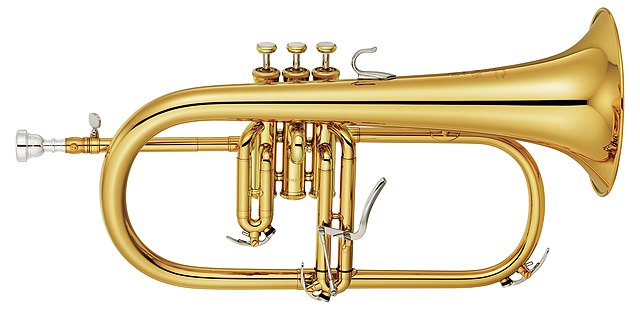The sousaphone is a brass instrument in the tuba family. Created around 1893 by J. W. Pepper at the direction of American bandleader John Philip Sousa, it was designed to be easier to play than the concert tuba while standing or marching, as well as to carry the sound of the instrument above the heads of the band. Like the tuba, sound is produced by moving air past the lips, causing them to vibrate or "buzz" into a large cupped mouthpiece. Unlike the tuba, the instrument is bent in a circle to fit around the body of the musician; it ends in a large, flaring bell that is pointed forward, projecting the sound ahead of the player. Because of the ease of carrying and the direction of sound, it is widely employed in marching bands, as well as various other musical genres. Sousaphones were originally made of brass. Beginning in the mid-20th century, some sousaphones have also been made of lighter materials such as fiberglass & plastic.
A sousaphone.
1893 sousaphones at the Museum of Making Music
Sousaphone player Tycho Cohran with the Hypnotic Brass Ensemble, at the TFF.Rudolstadt 2012
Saxophone and sousaphone players at a charity festival in Chicago, July 1930
A brass instrument is a musical instrument that produces sound by sympathetic vibration of air in a tubular resonator in sympathy with the vibration of the player's lips. Brass instruments are also called labrosones or labrophones, from Latin and Greek elements meaning 'lip' and 'sound'.
Six high brass instruments Left, from top: A reproduction baroque trumpet in D, a modern trumpet in B♭, a modern trumpet in D, a piccolo trumpet in B♭ (octave higher), and a flugelhorn in B♭. Right: a cornet in B♭.
A tenor horn (alto horn) in E♭, baritone horn in B♭, and euphonium in B♭
Brass instrument piston valves
Flugelhorn with three pistons and a trigger








